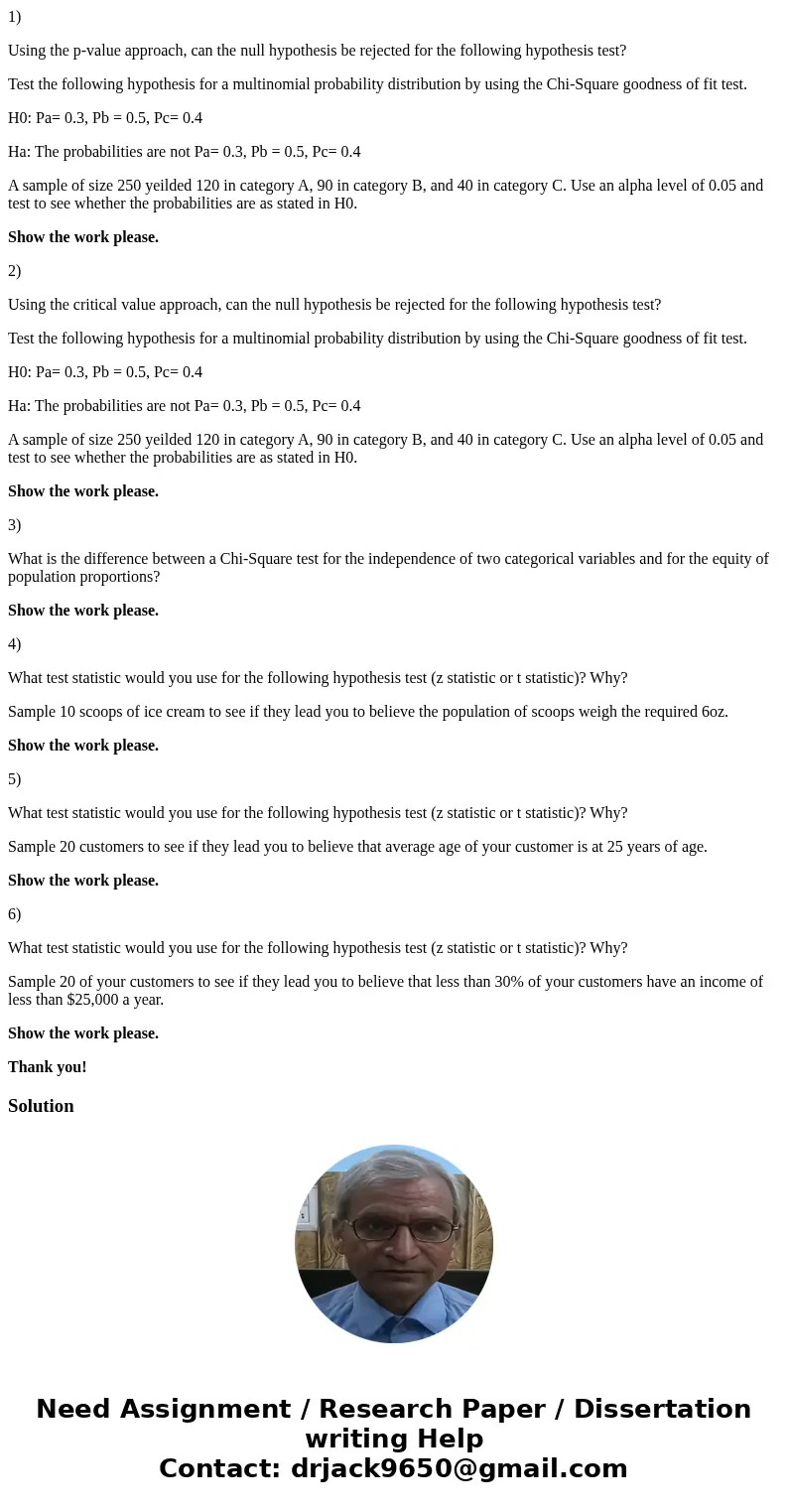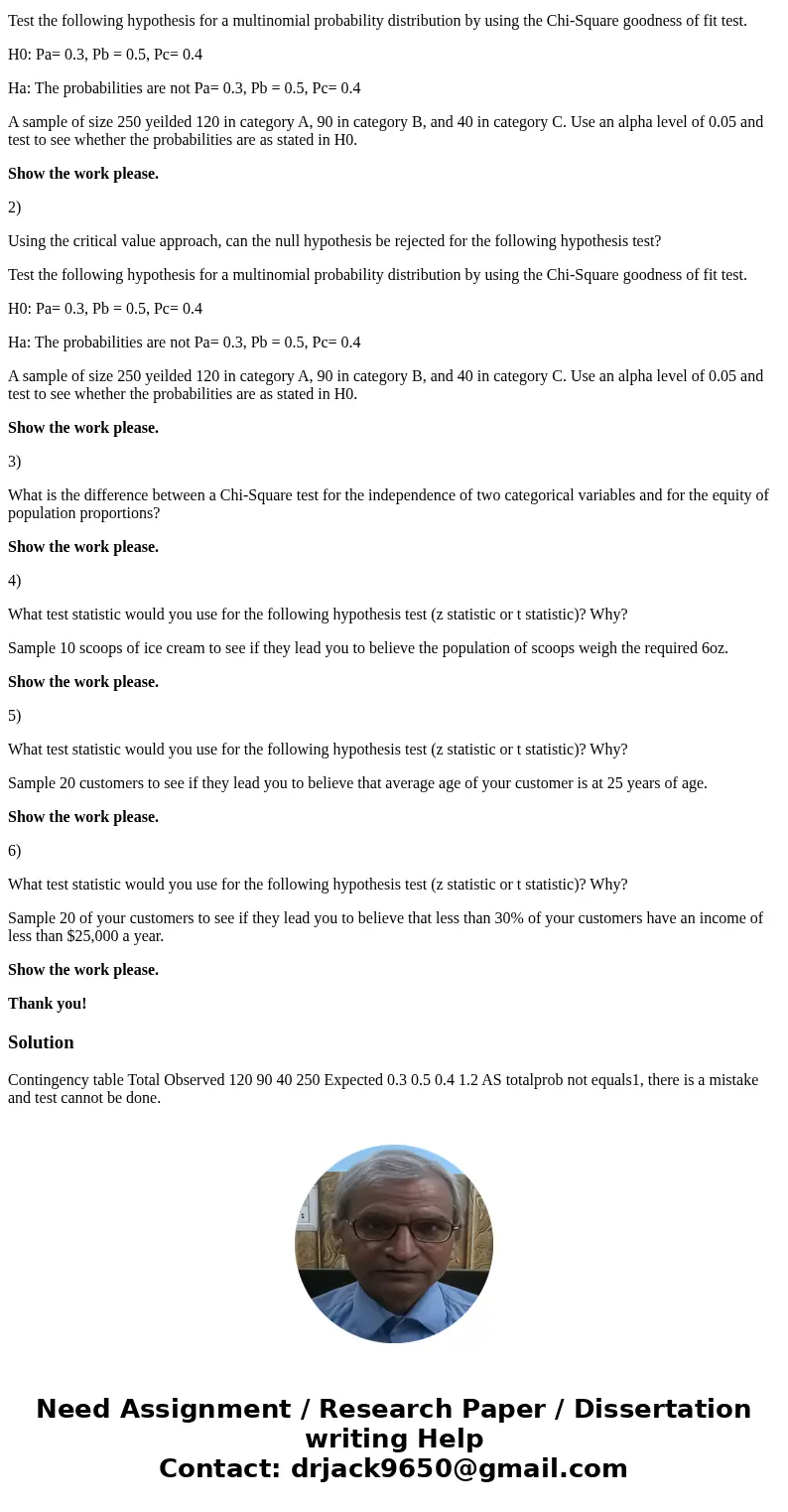1 Using the pvalue approach can the null hypothesis be rejec
1)
Using the p-value approach, can the null hypothesis be rejected for the following hypothesis test?
Test the following hypothesis for a multinomial probability distribution by using the Chi-Square goodness of fit test.
H0: Pa= 0.3, Pb = 0.5, Pc= 0.4
Ha: The probabilities are not Pa= 0.3, Pb = 0.5, Pc= 0.4
A sample of size 250 yeilded 120 in category A, 90 in category B, and 40 in category C. Use an alpha level of 0.05 and test to see whether the probabilities are as stated in H0.
Show the work please.
2)
Using the critical value approach, can the null hypothesis be rejected for the following hypothesis test?
Test the following hypothesis for a multinomial probability distribution by using the Chi-Square goodness of fit test.
H0: Pa= 0.3, Pb = 0.5, Pc= 0.4
Ha: The probabilities are not Pa= 0.3, Pb = 0.5, Pc= 0.4
A sample of size 250 yeilded 120 in category A, 90 in category B, and 40 in category C. Use an alpha level of 0.05 and test to see whether the probabilities are as stated in H0.
Show the work please.
3)
What is the difference between a Chi-Square test for the independence of two categorical variables and for the equity of population proportions?
Show the work please.
4)
What test statistic would you use for the following hypothesis test (z statistic or t statistic)? Why?
Sample 10 scoops of ice cream to see if they lead you to believe the population of scoops weigh the required 6oz.
Show the work please.
5)
What test statistic would you use for the following hypothesis test (z statistic or t statistic)? Why?
Sample 20 customers to see if they lead you to believe that average age of your customer is at 25 years of age.
Show the work please.
6)
What test statistic would you use for the following hypothesis test (z statistic or t statistic)? Why?
Sample 20 of your customers to see if they lead you to believe that less than 30% of your customers have an income of less than $25,000 a year.
Show the work please.
Thank you!
Solution
Contingency table Total Observed 120 90 40 250 Expected 0.3 0.5 0.4 1.2 AS totalprob not equals1, there is a mistake and test cannot be done.

 Homework Sourse
Homework Sourse